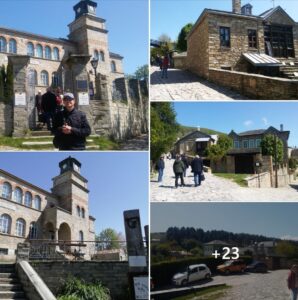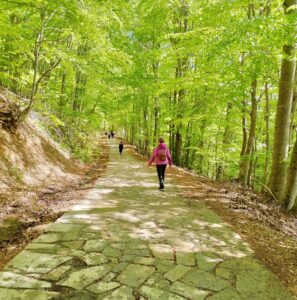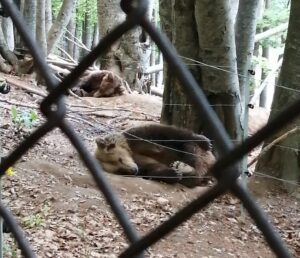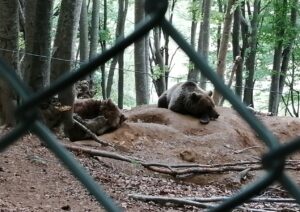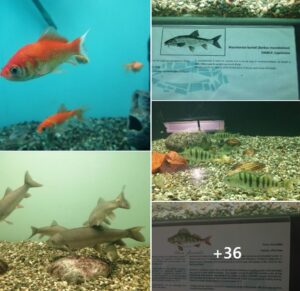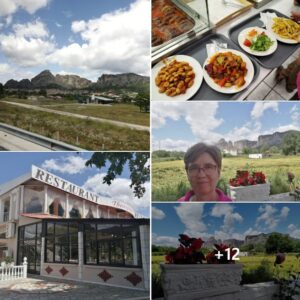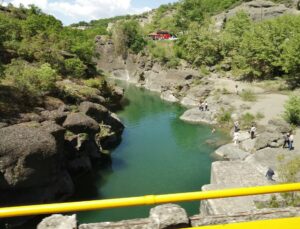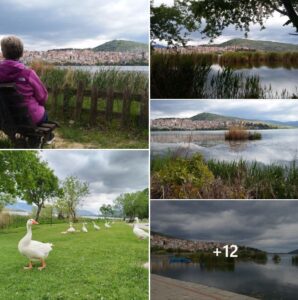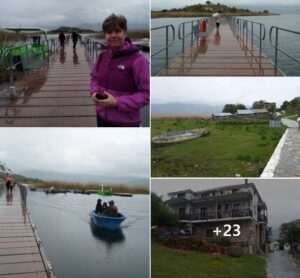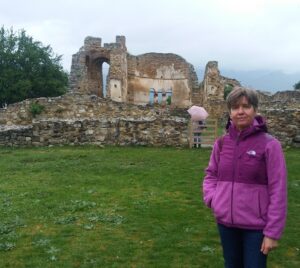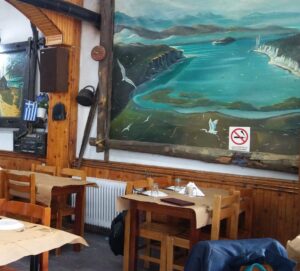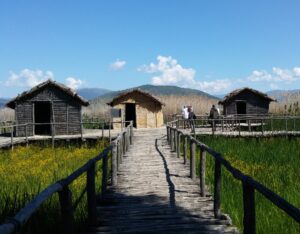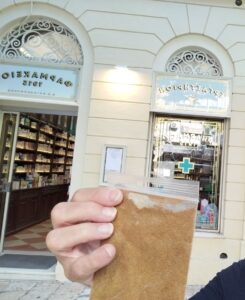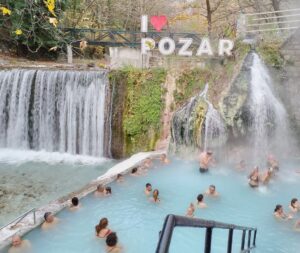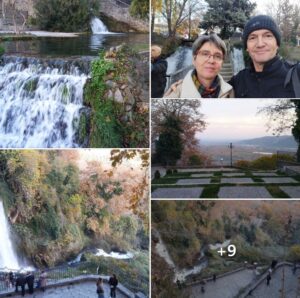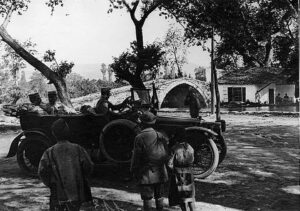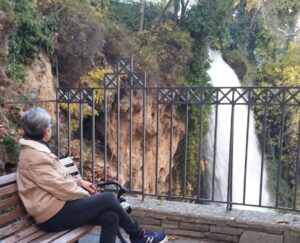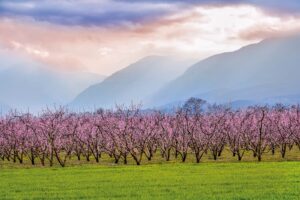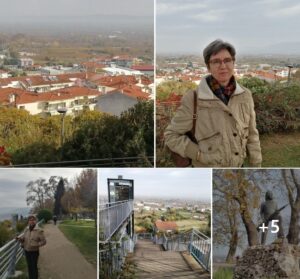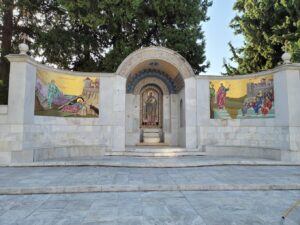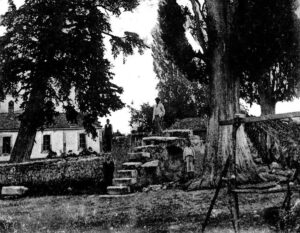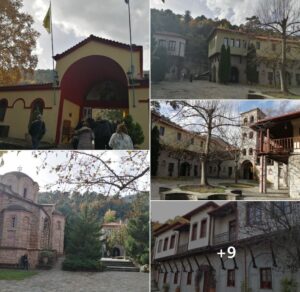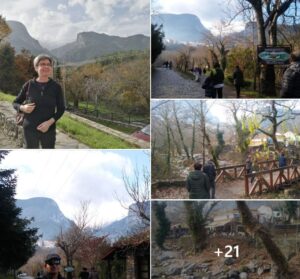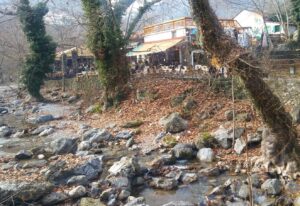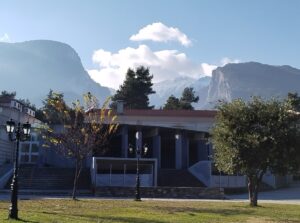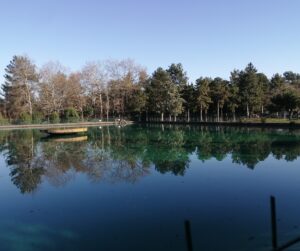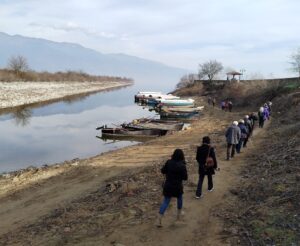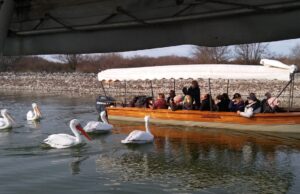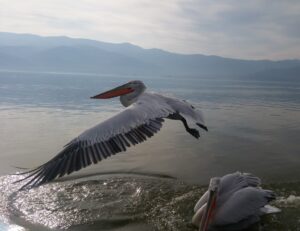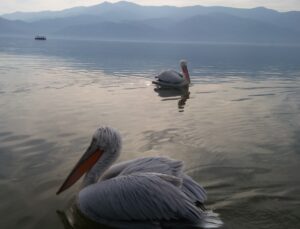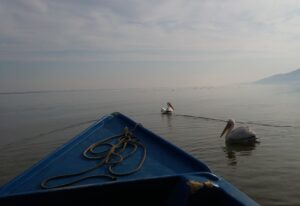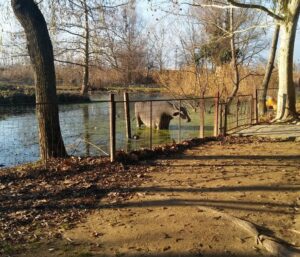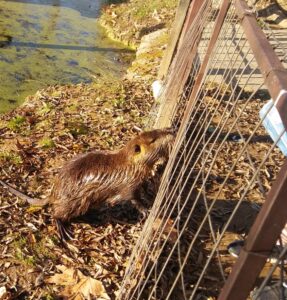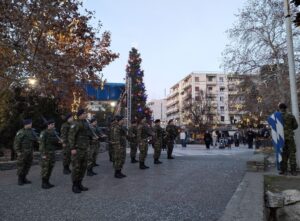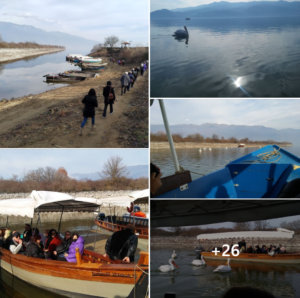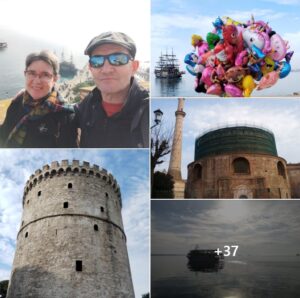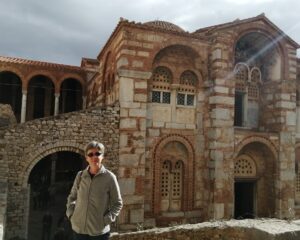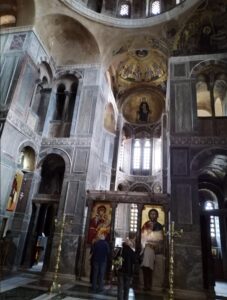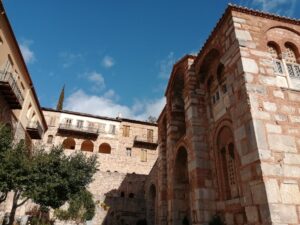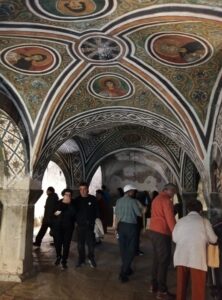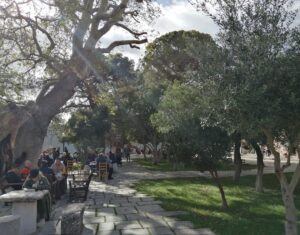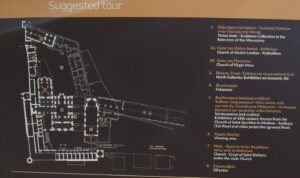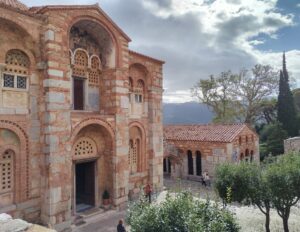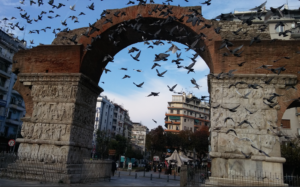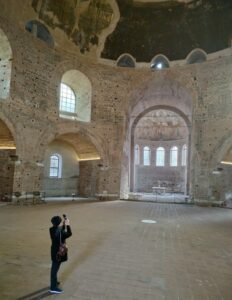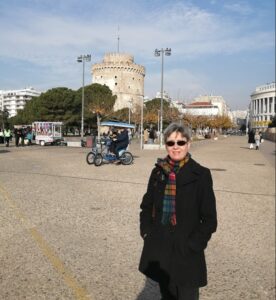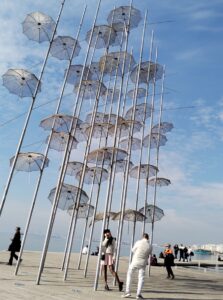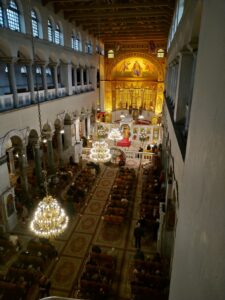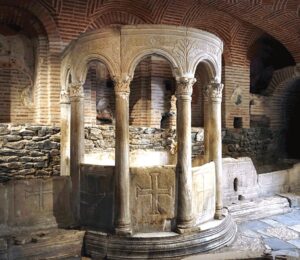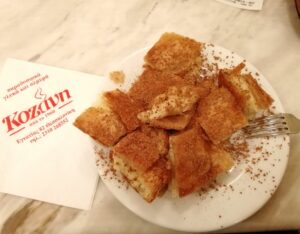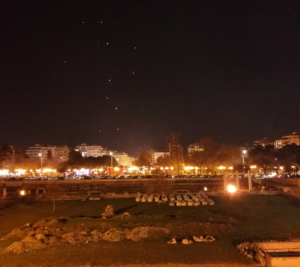Nymfaio, Florina
I visited the village of Nymfaio during my stay over Easter in Kastoria.
This village is situated in the prefecture of Florina (Greek region of west Macedonia). You will find it on Mount Vernon (Vitsi) at an altitude of 1.350 m.
According to UNESCO, Nymfaio is one of the ten most picturesque villages of Europe!
Truly, its name, that means ‘The Land of the Nymphs’ is befitting to this enchanted place that is graced by lush forestland and precious wildlife too.
Nymfaio was a delight to my eyes as I walked through it, along its cobblestone paths. The stonework and the classy old architecture on some of the buildings were just breathtaking, and I invite you to look at my photos on Facebook and see for yourselves.
By far, the most imposing edifice was the Nikeios School, an architectural marvel that nowadays operates as a conference Hall of Thessaloniki’s Aristotelian University.
We followed the many helpful signs to the Arcturos bear sanctuary as we made our way through the village past quaint dwellings and a piazza with charming eateries and cafes. Soon, we exited the village and came upon a path that ran through a marvelous beech forest…
The beauty of the beech forest was remarkable. It literally took my breath away, which meant I couldn’t run (ha ha) when I read the sign that told me I was in bear country! Let me repeat that: Wild bears were actually roaming free where I was walking, folks! The sign said I ought to keep quiet, which suited me just fine!
I mean, who wants a bear to know you’re nearby, right?
Yes. I will admit that, for a few moments, I panicked to know I had entered a place where a bear might appear at any moment.
Andy and I were taking photos back in Nymfaio as we speedily followed the guide – but we still had fallen behind the others in the coach group. Most of the people had gone well ahead of us and there were only a few, the most aged naturally, lagging way behind us, as we all made our way to the bear sanctuary. So, we were walking alone, my hubbie and I, and I didn’t like it one bit.
But then, I thought, Oh well. I never heard on TV of anyone getting attacked by a bear in this country, so my chances are good. You know?
So, I cast my trepidation aside and, after that, I thoroughly enjoyed my walk (about 15-20 minutes, as I recall) in this mesmerisingly beautiful setting.
When we reached a cabin amidst the forest that served as the office and gift store of Arcturos, I was pleased to reunite with familiar faces from the group.
Before I relay the details of my visit to the bear sanctuary, to tell you a little about Arcturos:
The name Arcturos means ‘Bear Watcher’ in ancient Greek, the name for bear being ‘Arctos’, by the way. And that is why the Arctic is called the Arctic, folks!
Arcturos is a non profit, non governmental, environmental organization (NGO) founded in 1992, focusing on the protection of wildlife fauna and natural habitat, in Greece and abroad. They have sanctuaries in Nymfaio for both bears and wolves in two different locations amidst the forestland near the village.
A guide took us into the forest, asking us to speak in whispers and to turn off the sound on our phones.
Arriving shortly later in a wooden construction with a roof and rows of seats we were invited to sit and enjoy a short presentation from the guide.
He was very pleasant, eloquent, and highly informative about the work of Arcturos and the bears themselves. Many of the facts I learned about the bears (brown bears, as the case is!) were very surprising.
One of them was that they actually never attack humans unless provoked and that they shy away from noise. He said, if you’re walking in the wild and you want to avoid brown bears, all you have to do is make some noise. The easiest thing, he said, is to play some music on your phone, and they’ll go far from you.
He didn’t say which kind of music, though. I mean, heavy metal or that cursed trap music that sounds like screeching cats would certainly do the trick. But soothing melodies like songs by Michael Bolton or Celine Dion? Now, that music may actually entice them closer to come lie down for a nap haha
“Music hath charms to soothe the savage beast”, after all 🙂
Anyway, here are some of the facts I recall from that awesome presentation:
When Arcturos is notified that a bear is being abused or in need of assistance, they collaborate with the authorities to rescue it and bring it to the bear sanctuary. This oftentimes takes place in other countries too, like Turkey or Bulgaria, where, to this day, it is still common to find a bear being abused in a circus or put in a cage outside a store or at a petrol station, in order to attract customers. So cruel, but sadly true, and it made me very sad to hear it.
But thank goodness for Arcturos. According to the presenter, there are no circuses left in Greece today that use bears, and I was relieved to hear it. I remember about 10 years ago, a circus had come in town on two different occasions, and they used animals. It was an Italian circus I will not name. I had complained to the council both times and was shocked to find they had no idea that animals in circuses were abused. The second time they assured me they wouldn’t allow another circus act with animals in town again and were, in time, proven true to their word.
To hear Arcturos had worked so hard to educate people so that animal acts in circuses have now completely been a thing of the past in my country was wonderful news to hear.
Our guide said they give the bears names in the sanctuary, and separate the males from the females. They also spay and neuter them, as the sanctuary is just a safe haven for them and only them to spend the rest of their lives in to the end. They are not to breed more bears in captivity, or to be released in the wild. The last is not a cruelty, but a mercy, because, having known slavery for most of their lives, it would be impossible for them to survive alone out there.
The staff at the sanctuary take care of their every need. They give them all the kinds of food they need, and they never go hungry. They have medical care, and especially the old bears get to live longer, because they go without nothing. In the wild, old bears cannot hunt, so die soon after they stop having the use of their eyes or their legs. An adult bear often has to cover long distances every day in search of food.
Another thing that surprised me to hear is that bears don’t hibernate as such, but rather fall into a deep sleep. Their bodies do not grow cold or rigid and their strong sense of smell remains fully alert. They will readily wake up if needed.
A bear can smell humans from far away, even while it is sleeping in the winter.
A note on the food – the people at Arcturos make sure to simulate life in the wild as much as possible, and in this sense, start to give the bears less and less food when it’s time to go into their deep sleeep, as it is the lack of food in the wild that biologically triggers this long sleep in their system.
After the presentation, we were led to the area where the bears are kept behind fences and buzzing electrical wires. Most of them were napping under the trees, and a couple approached lazily behind the fence the curious humans who looked at them with wonder. The bears seemed peaceful, and used to human presence. There was no sign of agitation, the way you often see wild animals behaving in a zoo, and I was pleased to see that.
We were told that all the bears had been rescued from zoos and cages outside stores, in Greece and abroad. Knowing they had found a safe heaven in this beautiful forest where they could stay forever, never to be alone, never caged or chained again, and with all their needs met, made my heart sing.
Before departure, I visited the gift shop, and made sure to support Arcturos with some purchases, hoping what little I spent would help them save more bears and more wolves in future. By the way, they don’t stop there, you know! They also save deer, otters, jackals, and other creatures of the wild!
I have a little bear figurine and an Arcturos mouse pad on my desk as I type this, and they remind me of the rescued bears every day.
To hear more about Arcturos and to support this wonderful cause with a purchase or a donation, please visit their website.
OOPPAAA! SIGN UP TO MY BIMONTHLY NEWSLETTER AND GET 3 BOOKS FROM ME AS A WELCOME GIFT! SEE BELOW FOR THIS OFFER!
YOU KNOW WHAT THEY SAY… SHARING IS CARING! Tweet this to spread some love:
Interested in travel, food and books from Greece? Here's a blog you will love! #Greek #blogger #writer Share on X
3 FREE books for you! Sign up below to receive them instantly!
NEW! Clean Christmas romance. Single mother Cathy Roussos gave up on love long ago, and veterinarian Alex Rallis doesn’t believe in it, but one magical Christmas on a Santorini farm might just change everything…
Check it out on Amazon Read a FREE sample!
A clean romantic suspense short read with an unreliable narrator that’ll keep you guessing! Vera is losing her mind over famous actor Yannnis Ksenos, except, she isn’t just a fan… Now, she plucks up the courage to ring his doorbell… Visit Amazon

